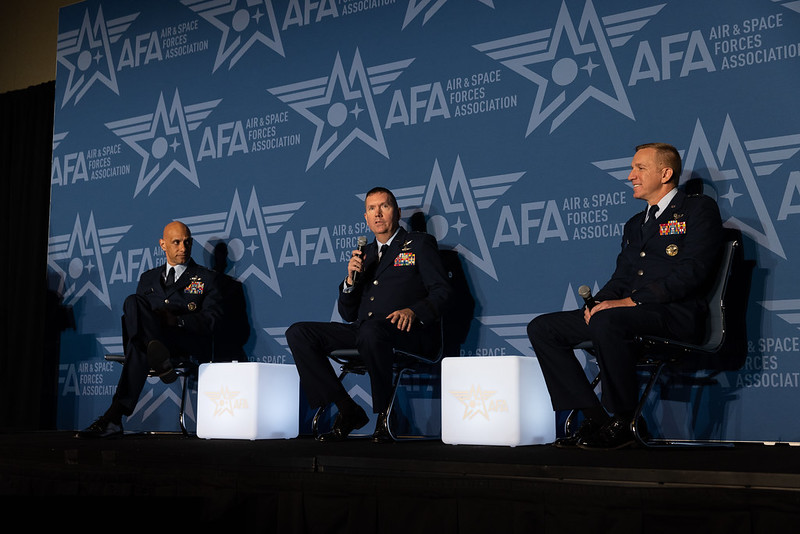International personnel will join the Space Force in December for its flagship training series Space Flag, just one new aspect of Space Training and Readiness Command’s planned slate of space-oriented exercises.
Activated in August 2021, STARCOM is one of three USSF field commands, roughly equivalent to an Air Force major command in the newer service’s flatter organizational structure. STARCOM added new types of personnel to Space Flag in 2022, when the exercise also received accreditation as a Joint National Training Capability.
The JNTC accreditation gave the command “more incentive to bring in other service partners,” said Maj. Gen. Shawn N. Bratton, commander of STARCOM. A Space Flag event in August, for example, involved members of the Army’s 1st Space Brigade practicing electronic warfare alongside Space Force Guardians. The event also included more cyber and intelligence personnel, Bratton told reporters at AFA’s Air, Space & Cyber Conference in September.
“We actually brought the cyber team in like a week or two ahead of time [for] the cyber portion of the exercise,” Bratton said. “Then the outcomes of that impacted the space operations piece.”
Doing so amounted to “a good first step” in incorporating cyber, Bratton said, “but we really need to integrate them together. … I think in December, we’ll be a little more integrated, and then I expect in next year’s Space Flag series, that cyber team will be fully integrated.”
In addition to Space Flag, STARCOM has begun to stage its new Skies series of exercises for Guardians and space personnel in the Air National Guard.
Black Skies, a live-fire electronic warfare exercise against a satellite target for USSF’s Space Operations Command, took place in September. Guardians practiced attacking what Bratton characterized as “the beginnings” of a training range in orbit—the range coming to be known as the National Space Test and Training Complex, or NSTTC.
The Guardians practiced EW against a legacy satellite target, the existence of which was why, Bratton said, Black Skies came first in the series.
A new Red Skies exercise will focus on orbital warfare, he said, which will call for a new “orbital warfare capability,” though “live-flying an asset on orbit” is unlikely to happen as soon as 2023—“as much as my team is super excited about doing that.”
A Blue Skies series will eventually focus on cyber, while a new command and control exercise, Polaris Hammer, begins in February.
Bratton said the fiscal 2023 and 2024 budgets will determine how much more STARCOM might be able to add to the NSTTC, while it’s already developing the range’s “digital side.” Meanwhile, the balance of live vs. virtual training remained a question.
“How do I weigh the value of live training versus simulation, and how do I know which provides a better training environment?” Bratton said. Right now, space operators in the Space Force never operate a real satellite until they arrive at their first unit, arriving prepared with only classroom instruction.
“We don’t think that’s exactly right,” he said, “and so we’re trying to balance that with the resources we have.” He said partnering with a university program, such as with the Air Force Academy’s FalconSAT program to build and fly cubesats, could provide a cost-effective solution.
This story was updated at 7:55 a.m. Nov. 9 to include information at the Polaris Hammer exercise.

